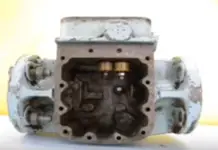Difference Between Alternating Current and Direct Current:
Modern days electrical energy plays an important role human life. Electrical energy is generated in two form one is alternating current and direct current. here alternating current was initiated by Nicolas Testla and Direct current initiated by Thomas Alva edition. Both power sources are widely used in our day to day life, i.e. alternating current is used in our all home appliances such as TV, washing machine, electric fan, etc. and direct current is used in battery charger, mobile phone, etc. However, in this tutorial we are going to see the difference between alternating current and direct current.
Difference Between Alternating Current and Direct Current.
Direction:
Alternating current reverses, the direction periodically, i.e. now the current flows from the phase to neutral means, during second half cycle (negative) the current flows from neutral to phase, in direct current do not reverse the direction.
Magnitude:
In alternating current, the magnitude of the voltage and current will be varied with respect to time. In DC the magnitude does not change with respect to time, typically it is constant.
Line Parameter:
In alternating current all the line parameters are considered, it is called Impedance. In Direct current only resistance of the line is considered since the capacitor acts as open circuit and inductor acts as short circuit for DC source.
[wp_ad_camp_5]
Skin effect for Transmission Line:
In AC Skin effect has to be taken care, but DC does not have skin effect. because for high frequency, skin effect is high, but low frequency skin effect is less.
Eddy current losses and histories losses:
Alternating Current distribution is designed to decrease the eddy current losses and hysteresis losses. Since the frequency is directly proportional to the eddy current and hysteresis losses. In DC Eddy current and hysteresis losses are very low, that’s why DC machines are not required to manufacturing with silicon stampings.
Losses:
AC Transmission has high losses as compared with DC transmission lines.
Power Factor:
Power factor is defined as the ratio between real power to apparent power. Power factor plays major role in AC transmission system. The value of Power factor will be varied between -1 to 1. Low power factor increases the line losses; that’s Why AC System needs power factor improvement methods. But in Direct current power factor never come.
Nature:
AC transmission has three wire or four wire system but DC uses single wire (ground taken as return path) or double wire.
Notations:
AC polarity is called as Phase and neutral and in DC we use positive and negative.
Difference between Negative and neutral:
Here in AC neutral is considered as current return path; the potential difference between the neutral point to ground will zero, but in DC the potential difference between negative to ground will half of the positive to negative voltage. i.e. if we have 110 Volts DC, then the potential difference between ground to negative terminal will be -55 volts.
Configuration:
In AC, the loads will be connected as either star or delta configuration. In DC there is no such configuration, directly load will be connected across the DC source.
Source:
AC can be generated by generator/alternator; the main source of DC is cell or battery. Also AC can be converted in to DC and DC can be converted into AC
Types of Waves:
AC will have different types like Sinusoidal, Square Trapezoidal, and Triangular. In DC will be of pure or pulsating eave form.
Frequency:
The number of repetitive cycle per second is called frequency, AC has frequency. In our house hold we uses either 50 Hz or 60 Hz. But DC do not have frequency typically it is zero.
[wp_ad_camp_3]
Magnetism:
The magnetism is produced by Alternating current is called rotating magnetism. In case the magnetism produced by Dc source is called steady magnetic field.
Conventional:
We use three phase or single phase in Alternating current, but DC we use only positive and negative.
Safety:
DC current shock is dangerous than alternating current.
[wp_ad_camp_5]
Function of Transformer:
Transformer is a device which is used step up or step down the voltage. In AC transformer plays major role, but in DC transformer works as short circuit. So transformers are cannot be used in DC source.
Transmitting Power:
DC has less loss than AC system, that’s why DC system preferred for long transmission. Typically, it is called HVDC transmission system. If the Transmitting distance is more than 600 KM, then DC transmissions are preferred.









